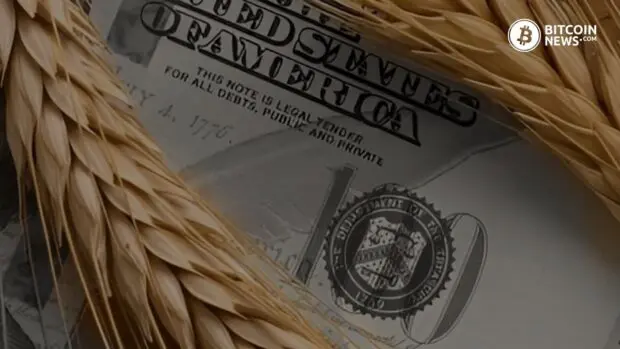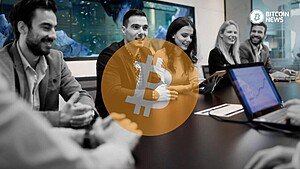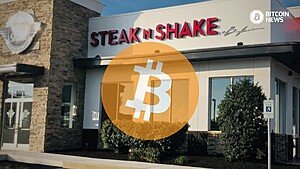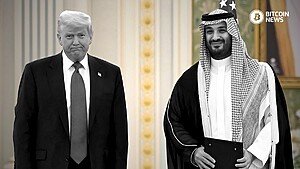Since the creation of the first currency – wheat – money has gone through three major phases of monetary creation. In this article, I hope to elaborate on the phenomenal changes in monetary utility amongst the peoples playing with each technological method of money creation. Especially the people who went to the hard work of creating that money.
An Introduction to the Evolution of Money
Money was invented to solve very complicated, highly wasteful problems in human economic activity under a barter trading system.
The first problem is the “double coincidence of wants” in which one of the two parties in a trade does not want what the other party is willing to give them, but something else. For example, if I have wheat and you have apples, but I want a chicken while you want wheat, you first have to find somebody who wants apples for his chicken then come back and trade that chicken with me for wheat.
Imagine how excruciating that was.
The second problem is called “impossible divisibility”. So you bring the chicken to me. Ok, But I do not want a whole chicken. I only want a chicken leg for my lunch. Goes without saying that removing a chicken leg from a live chicken wastes a lot of meat. Now you’re in a bind. How the hell do you keep the other parts of the chicken fresh until the next trade cycle where somebody wants all chicken pieces?
Remember, they did not have refrigerators 10,000 years ago. Best bet is have it for your supper, or donate it to the local Diner. Third but not least, I will tell you about “a multiplicity of prices”. In the Barter system, the number of prices grew exponentially as a power of the number of goods N, via the formula for finding the sum of N natural numbers – an arithmetic series.
Prices = N(N – 1) /2 where N is the number of goods.
For example in an economy with apples and bananas only, you had two prices. One for apples in monetary bananas (MB coin) and one for bananas in monetary apples (MA coin). Add just one good, an orange, and the prices suffer a combinatorial explosion from 2 to 6. Because an apple can be bought in MB or MO (monetary oranges), a banana in MA or MO, and an orange in MB or MA.
If you think this is wild and sounds like a crypto Ponzi scheme, it kinda is. And in our world today, 3 goods have 3 prices. 500 S&P company stocks have 500 prices on any given day. But in that barter world, the S&P 500 would have 124,750 prices! Good luck finding a stock broker who will successfully manage your S&P 500 portfolio.
Before Gold
The oldest technology of money-making involved turning, by political decree, a commodity into money.
“I hereby decree that wheat can be traded as money”
– Some King
This era saw money changing forms the most and the evolution of money happened in different ways in different times and in different parts of the world.
The beauty of using a commodity like wheat as money, is that it solves some of the problems mentioned before. For example, if by decree wheat is money, then that automatically removes the multiplicity of prices. Every good is now priced in wheat and the true value in wheat can be discovered (by price discovery) over time, as people trade various goods for wheat. The forces of supply and demand will either make an apple worth more wheat or less.
But how do you price in wheat? Evidently, counting wheat grains is impractical, so it was better to weigh the wheat. This is where monies such as pounds later came from. These originate from actual units of weight. Since wheat is very flexible in its weight measurements as a wheat grain is really tiny, “impossible divisibility” is not its problem. It is highly divisible.
Just mentioning that “wheat is divisible” doesn’t imply that you possess a substantial amount of money, especially if you set the price of your wheat in grains instead of kilograms or pounds. People who have a problem with bitcoin’s divisibility say this. But I understand why, they think it is like software – “Copy-able”. No, it is more like wheat.
Wheat is also directly useful as it can be eaten, and therefore a society in which wheat is scarce would find the trading of goods in wheat quite convenient. But imagine, alas, one fine morning, this society gets visitors from another land and what do they have on them? They have traveled with truck-loads upon truck-loads of wheat.
The Discovery of Monetary Debasement
Because wheat is scarce where these visitors come from, its value with respect to other goods is really high. For example, where a quarter kilogram of wheat would get them one kilogram of groundnuts, now, it can get them an entire chicken. And they happen to have tons of wheat!
The villagers of our wheat-deprived town do not know it yet but they are about to be robbed in broad daylight, through “fair” trade.
By simply changing location, the first wheat millionaires were born. They had discovered monetary debasement. Back in their own lands, their loot was worth about a garden and a tiny shelter. Now they would acquire big farms, mansions, dozens of servants, and many beautiful wives if they were African men.
Of course, later, the hardworking villagers found out. And now they had to change their currency to something “harder”. Enter gold.
A Golden Era
The golden era solved the monetary debasement problem because the manufacture of gold as money was harder than the manufacture of wheat, salt, cowrie shells, precious stones and paper money. Gold was also quite fungible/ perfectly interchangeable, something that couldn’t be said for most precious stones or cowrie shells. It was just plentiful enough to facilitate trade unlike extremely precious artefacts like pearls, and was very durable unlike wheat, salt, cowrie shells and many other commodity monies.
Really, the world struck it rich with gold. And economic trade bloomed.
A lot can be said about gold, from its hold over the Alchemists and the Spanish conquistadors to the deeper discussions over its troubles with salability across space. However let us look at the way it empowered the gold miners. Then connect the dots back to us, then to the future.
Gold Mining
Who was allowed to mine Gold?
In his classic novel ‘Mine Boy’, Peter Abrahams chronicles the life of a mine boy called Xuma in early-stage Apartheid South Africa. As the story recounts, the mining of gold is an excruciating process that involved tunneling vertically underground like a rat, and then tunneling sideways, like a rat still. All while inhaling dangerous dust particles.
When the miner comes out, they are paid peanut money while the rest of the money is pocketed by the White bosses running the operation. This is an ugly Ponzi scheme where the miner invests their life only to get peanuts and dangerous lung diseases.
It is a super hierarchy of power with one king at the top and everybody else below, making money for the king. A foreign king, ruling the miners on their land and being paid very well for it.
The sole advantage lies in the intrinsic value of gold, similar to that of wheat. Gold serves a multitude of essential purposes in various industrial, domestic, and ornamental applications. Consequently, the network of gold miners naturally attracted value to its products from external sources, without the need for artificial coercion. What Ludwig von Mises would have called motivation by praxeology.
Dollar/Fiat Mining
Fast forward 100 years and we have dollar miners. Better known as currency printers. This is a more decent job than gold mining given the ease of the work, and if we are to see the network, here, some considerable value still goes back to the miner nodes. Dollars are also superior to gold in their speed of salability across space.
You want to move $1 billion worth of gold from the USA to Russia during a trade deal? Good luck spending less than $100k on shipping costs, security costs, checking costs.
You want to move $1 billion worth of paper dollars from the USA to Russia during a trade deal? You will spend less than $10k on the flight costs (even if you move digital money, which costs zero dollars to move, you still need to ship physical greenbacks later).
The only problem is that you might print $1 billion more for yourself. So dollar printing is not immune from monetary debasement policies and nowadays, the problem is so bad that if the USA debases, everybody debases. It is all one big debasement a.k.a debt expansion.
If you make yourself artificially richer, we all go by that way.
The fiat mining system must leech external sources of value to survive e.g. the Dot Com era, the Housing Market era, and now the Web3 era, eventually tainting them with its inadequacies.
The Ponzi schemes in the Web3 world are not caused by many things other than the fact that the people nearest to the dollar printer are getting rich for just knowing the right people, so the rest of us i.e. Tech bros, Crypto bros and NFT bros must shill our ‘brojects’ to kingdom come if we are to make it like them.
But fiat mining/printing is more efficient than the slavish conservativism of gold mining. What can save us?
Bitcoin Mining / Proof-of-Work Mining
Imagine a network that combines the hardness of gold with the salability of fiat, and more. If you are tired of me saying Bitcoin, let me generalize today and say PoW Crypto Mining (PCM). PCM is a revolution so momentous it has yet to be understood and appreciated by the majority of human beings on earth.
Even I am still understanding it, while I relish its grandeur. The way to imagine it is to see it for yourself. It is finding ever more energy to consume, without denying other use-cases of their energy use, while empowering the poorest people on earth. Like some benevolent energy-seeker.
Better still, the miner this time round IS the boss. While in the first two networks, the miner has to give their money to the boss who is running the show, that has never been a profitable social structure when it comes to money until circa 2008.
It is almost a throwback to the wheat days. You grow your wheat/money, and it is yours. But the king could still take it from you. Now, they cannot. Literally cannot take your bitcoin.
It will take a long while to let all this sink in.
Here is what I concur, really. The climate change people will get tired of fighting fossil fuels and will let them be used full steam ahead so that they can power the energy transition to clean energy. Once fossils are massively unleashed, PCM will rocket currencies like Bitcoin to the stage of canonical international utility because if you want to move $1 billion of Bitcoin, you can do it for less than $1, nobody can stop it (with fiat, planes can be shot down), and you can do it in private. Meanwhile planes can be seen by everybody. Even kids with digital skills.
Conclusion
Humans fear nuclear power, yes. But responsibility over destructive energy will not be forced onto people. If people are given self-sovereignty, they will take care of all energy resources better than any super genius climate scientist with multiple PhDs and a neuralink in his brain connected straight to ChatGPT Plus.
Currently, the USA and its allies are like the big boys, trying to stop the little ones from playing with fire. But if the little ones never grow up to be self-sovereign, then they will grow to be frustrated siblings who cause trouble. Bitcoiners are not trying to rule the world, no. They are trying to rule their finances so they can have families, they can feed well and take good care of themselves, as they participate in honestly creating a big beautiful world.
Bitcoin mining is the most miraculous lottery on this planet. Whoever plays wins what their strength is worth. The best man wins and the idiot loses. Dollar mining is a Ponzi scheme, alas. Gold mining won’t scale on its own unless you bring slavery back.
It is unheard of, this Bitcoin’s way of creating money. Thankfully, the world is still trying to grapple with it.










